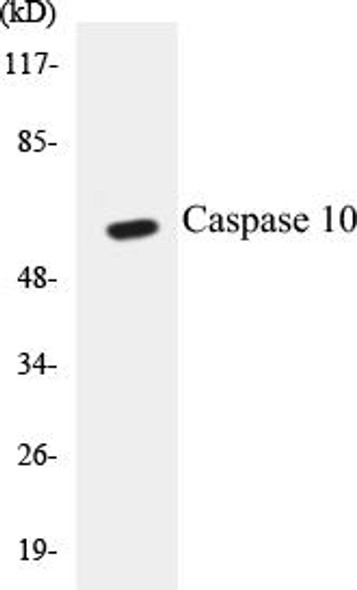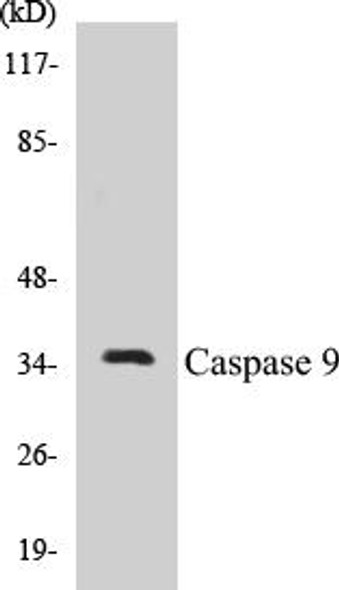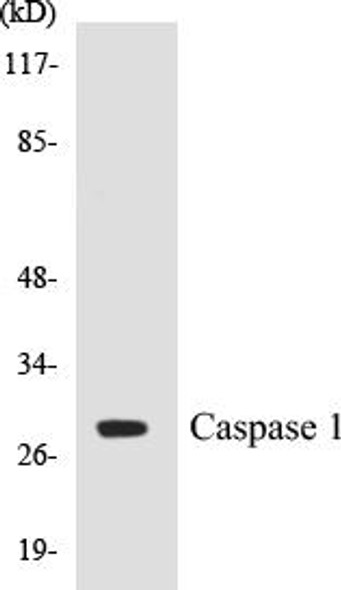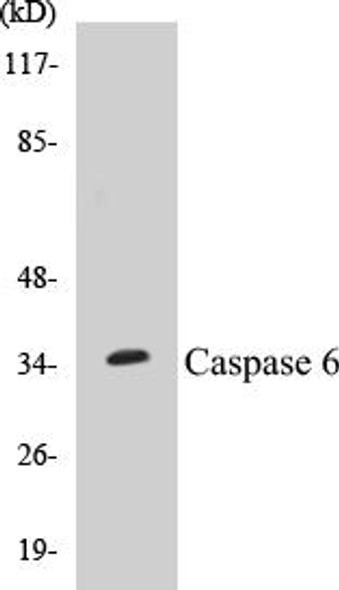Description
Caspase 8 Colorimetric Cell-Based ELISA Kit
The Caspase-8 Colorimetric Cell-Based ELISA Kit is a powerful tool for researchers looking to accurately measure caspase-8 levels in cell lysates. This kit offers high sensitivity and specificity, ensuring precise and reproducible results for a variety of research applications.Caspase-8 is a key player in apoptotic cell death and has been implicated in various diseases, including cancer and autoimmune disorders. By accurately measuring caspase-8 levels, researchers can gain valuable insights into the mechanisms of cell death and potential therapeutic targets.
With its easy-to-use protocol and reliable performance, the Caspase-8 Colorimetric Cell-Based ELISA Kit is a valuable asset for any laboratory conducting research on apoptosis and related pathways. Visit our website to learn more about this innovative kit and how it can advance your research efforts.
| Product Name: | Caspase 8 Colorimetric Cell-Based ELISA Kit |
| Product Code: | CBCAB00280 |
| ELISA Type: | Cell-Based |
| Target: | Caspase 8 |
| Reactivity: | Human, Mouse, Rat |
| Dynamic Range: | > 5000 Cells |
| Detection Method: | Colorimetric 450 nmStorage/Stability:4°C/6 Months |
| Format: | 96-Well Microplate |
The Caspase 8 Colorimetric Cell-Based ELISA Kit is a convenient, lysate-free, high throughput and sensitive assay kit that can detect Caspase 8 protein expression profile in cells. The kit can be used for measuring the relative amounts of Caspase 8 in cultured cells as well as screening for the effects that various treatments, inhibitors (ie siRNA or chemicals), or activators have on Caspase 8.
Qualitative determination of Caspase 8 concentration is achieved by an indirect ELISA format. In essence, Caspase 8 is captured by Caspase 8-specific primary antibodies while the HRP-conjugated secondary antibodies bind the Fc region of the primary antibody. Through this binding, the HRP enzyme conjugated to the secondary antibody can catalyze a colorimetric reaction upon substrate addition. Due to the qualitative nature of the Cell-Based ELISA, multiple normalization methods are needed:
| 1. | A monoclonal antibody specific for human GAPDH is included to serve as an internal positive control in normalizing the target absorbance values. |
| 2. | Following the colorimetric measurement of HRP activity via substrate addition, the Crystal Violet whole-cell staining method may be used to determine cell density. After staining, the results can be analysed by normalizing the absorbance values to cell amounts, by which the plating difference can be adjusted. |
| Database Information: | Gene ID: 841, UniProt ID: Q14790, OMIM: 211980/601763/607271, Unigene: Hs.599762 |
| Gene Symbol: | CASP8 |
| Sub Type: | None |
| UniProt Protein Function: | CASP8: Most upstream protease of the activation cascade of caspases responsible for the TNFRSF6/FAS mediated and TNFRSF1A induced cell death. Binding to the adapter molecule FADD recruits it to either receptor. The resulting aggregate called death- inducing signaling complex (DISC) performs CASP8 proteolytic activation. The active dimeric enzyme is then liberated from the DISC and free to activate downstream apoptotic proteases. Proteolytic fragments of the N-terminal propeptide (termed CAP3, CAP5 and CAP6) are likely retained in the DISC. Cleaves and activates CASP3, CASP4, CASP6, CASP7, CASP9 and CASP10. May participate in the GZMB apoptotic pathways. Cleaves ADPRT. Hydrolyzes the small-molecule substrate, Ac-Asp-Glu-Val-Asp-|-AMC. Likely target for the cowpox virus CRMA death inhibitory protein. Isoform 5, isoform 6, isoform 7 and isoform 8 lack the catalytic site and may interfere with the pro-apoptotic activity of the complex. Heterotetramer that consists of two anti-parallel arranged heterodimers, each one formed by a 18 kDa (p18) and a 10 kDa (p10) subunit. Interacts with FADD, CFLAR and PEA15. Isoform 9 interacts at the endoplasmic reticulum with a complex containing BCAP31, BAP29, BCL2 and/or BCL2L1. Interacts with TNFAIP8L2. Interacts with human cytomegalovirus/HHV-5 protein vICA/UL36; this interaction inhibits CASP8 activation. Isoform 1, isoform 5 and isoform 7 are expressed in a wide variety of tissues. Highest expression in peripheral blood leukocytes, spleen, thymus and liver. Barely detectable in brain, testis and skeletal muscle. Belongs to the peptidase C14A family. 9 isoforms of the human protein are produced by alternative splicing. |
| UniProt Protein Details: | Protein type:Protease; EC 3.4.22.61; Apoptosis Chromosomal Location of Human Ortholog: 2q33-q34 Cellular Component: nucleoplasm; mitochondrial outer membrane; neuron projection; cytoskeleton; mitochondrion; Noc1p-Noc2p complex; cytoplasm; microtubule organizing center; CD95 death-inducing signaling complex; cytosol; lipid raft Molecular Function:peptidase activity; protein binding; protein heterodimerization activity; cysteine-type endopeptidase activity; ubiquitin protein ligase binding; death receptor binding; protein complex binding; tumor necrosis factor receptor binding; cysteine-type peptidase activity Biological Process: macrophage differentiation; T cell activation; viral reproduction; apoptosis; protein heterooligomerization; positive regulation of proteolysis; heart development; natural killer cell activation; response to lipopolysaccharide; toll-like receptor 3 signaling pathway; proteolysis; response to estradiol stimulus; response to antibiotic; proteolysis involved in cellular protein catabolic process; angiogenesis; positive regulation of macrophage differentiation; toll-like receptor 4 signaling pathway; cell structure disassembly during apoptosis; caspase activation; positive regulation of I-kappaB kinase/NF-kappaB cascade; B cell activation; MyD88-independent toll-like receptor signaling pathway; negative regulation of I-kappaB kinase/NF-kappaB cascade; response to ethanol; induction of apoptosis via death domain receptors; toll-like receptor signaling pathway; response to cobalt ion; innate immune response; response to cold; neural tube formation Disease: Caspase 8 Deficiency; Breast Cancer; Lung Cancer; Hepatocellular Carcinoma |
| NCBI Summary: | This gene encodes a member of the cysteine-aspartic acid protease (caspase) family. Sequential activation of caspases plays a central role in the execution-phase of cell apoptosis. Caspases exist as inactive proenzymes composed of a prodomain, a large protease subunit, and a small protease subunit. Activation of caspases requires proteolytic processing at conserved internal aspartic residues to generate a heterodimeric enzyme consisting of the large and small subunits. This protein is involved in the programmed cell death induced by Fas and various apoptotic stimuli. The N-terminal FADD-like death effector domain of this protein suggests that it may interact with Fas-interacting protein FADD. This protein was detected in the insoluble fraction of the affected brain region from Huntington disease patients but not in those from normal controls, which implicated the role in neurodegenerative diseases. Many alternatively spliced transcript variants encoding different isoforms have been described, although not all variants have had their full-length sequences determined. [provided by RefSeq, Jul 2008] |
| UniProt Code: | Q14790 |
| NCBI GenInfo Identifier: | 2493531 |
| NCBI Gene ID: | 841 |
| NCBI Accession: | Q14790.1 |
| UniProt Secondary Accession: | Q14790,O14676, Q14791, Q14792, Q14793, Q14794, Q14795 Q14796, Q15780, Q15806, Q53TT5, Q8TDI1, |
| UniProt Related Accession: | Q14790 |
| Molecular Weight: | |
| NCBI Full Name: | Caspase-8 |
| NCBI Synonym Full Names: | caspase 8, apoptosis-related cysteine peptidase |
| NCBI Official Symbol: | CASP8 |
| NCBI Official Synonym Symbols: | CAP4; MACH; MCH5; FLICE; ALPS2B; Casp-8 |
| NCBI Protein Information: | caspase-8; FADD-like ICE; MACH-alpha-1/2/3 protein; apoptotic protease Mch-5; MACH-beta-1/2/3/4 protein; apoptotic cysteine protease; ICE-like apoptotic protease 5; MORT1-associated ced-3 homolog; FADD-homologous ICE/CED-3-like protease; caspase 8, apoptosis-related cysteine protease |
| UniProt Protein Name: | Caspase-8 |
| UniProt Synonym Protein Names: | Apoptotic cysteine protease; Apoptotic protease Mch-5; CAP4; FADD-homologous ICE/ced-3-like protease; FADD-like ICE; FLICE; ICE-like apoptotic protease 5; MORT1-associated ced-3 homolog |
| Protein Family: | Caspase |
| UniProt Gene Name: | CASP8 |
| UniProt Entry Name: | CASP8_HUMAN |
| Component | Quantity |
| 96-Well Cell Culture Clear-Bottom Microplate | 2 plates |
| 10X TBS | 24 mL |
| Quenching Buffer | 24 mL |
| Blocking Buffer | 50 mL |
| 15X Wash Buffer | 50 mL |
| Primary Antibody Diluent | 12 mL |
| 100x Anti-Phospho Target Antibody | 60 µL |
| 100x Anti-Target Antibody | 60 µL |
| Anti-GAPDH Antibody | 60 µL |
| HRP-Conjugated Anti-Rabbit IgG Antibody | 12 mL |
| HRP-Conjugated Anti-Mouse IgG Antibody | 12 mL |
| SDS Solution | 12 mL |
| Stop Solution | 24 mL |
| Ready-to-Use Substrate | 12 mL |
| Crystal Violet Solution | 12 mL |
| Adhesive Plate Seals | 2 seals |
The following materials and/or equipment are NOT provided in this kit but are necessary to successfully conduct the experiment:
- Microplate reader able to measure absorbance at 450 nm and/or 595 nm for Crystal Violet Cell Staining (Optional)
- Micropipettes with capability of measuring volumes ranging from 1 µL to 1 ml
- 37% formaldehyde (Sigma Cat# F-8775) or formaldehyde from other sources
- Squirt bottle, manifold dispenser, multichannel pipette reservoir or automated microplate washer
- Graph paper or computer software capable of generating or displaying logarithmic functions
- Absorbent papers or vacuum aspirator
- Test tubes or microfuge tubes capable of storing ≥1 ml
- Poly-L-Lysine (Sigma Cat# P4832 for suspension cells)
- Orbital shaker (optional)
- Deionized or sterile water
*Note: Protocols are specific to each batch/lot. For the correct instructions please follow the protocol included in your kit.
| Step | Procedure |
| 1. | Seed 200 µL of 20,000 adherent cells in culture medium in each well of a 96-well plate. The plates included in the kit are sterile and treated for cell culture. For suspension cells and loosely attached cells, coat the plates with 100 µL of 10 µg/ml Poly-L-Lysine (not included) to each well of a 96-well plate for 30 minutes at 37°C prior to adding cells. |
| 2. | Incubate the cells for overnight at 37°C, 5% CO2. |
| 3. | Treat the cells as desired. |
| 4. | Remove the cell culture medium and rinse with 200 µL of 1x TBS, twice. |
| 5. | Fix the cells by incubating with 100 µL of Fixing Solution for 20 minutes at room temperature. The 4% formaldehyde is used for adherent cells and 8% formaldehyde is used for suspension cells and loosely attached cells. |
| 6. | Remove the Fixing Solution and wash the plate 3 times with 200 µL 1x Wash Buffer for five minutes each time with gentle shaking on the orbital shaker. The plate can be stored at 4°C for a week. |
| 7. | Add 100 µL of Quenching Buffer and incubate for 20 minutes at room temperature. |
| 8. | Wash the plate 3 times with 1x Wash Buffer for 5 minutes each time. |
| 9. | Add 200 µL of Blocking Buffer and incubate for 1 hour at room temperature. |
| 10. | Wash 3 times with 200 µL of 1x Wash Buffer for 5 minutes each time. |
| 11. | Add 50 µL of 1x primary antibodies (Anti-Caspase 8 Antibody and/or Anti-GAPDH Antibody) to the corresponding wells, cover with Parafilm and incubate for 16 hours (overnight) at 4°C. If the target expression is known to be high, incubate for 2 hours at room temperature. |
| 12. | Wash 3 times with 200 µL of 1x Wash Buffer for 5 minutes each time. |
| 13. | Add 50 µL of 1x secondary antibodies (HRP-Conjugated AntiRabbit IgG Antibody or HRP-Conjugated Anti-Mouse IgG Antibody) to corresponding wells and incubate for 1.5 hours at room temperature. |
| 14. | Wash 3 times with 200 µL of 1x Wash Buffer for 5 minutes each time. |
| 15. | Add 50 µL of Ready-to-Use Substrate to each well and incubate for 30 minutes at room temperature in the dark. |
| 16. | Add 50 µL of Stop Solution to each well and read OD at 450 nm immediately using the microplate reader. |
(Additional Crystal Violet staining may be performed if desired – details of this may be found in the kit technical manual.)






